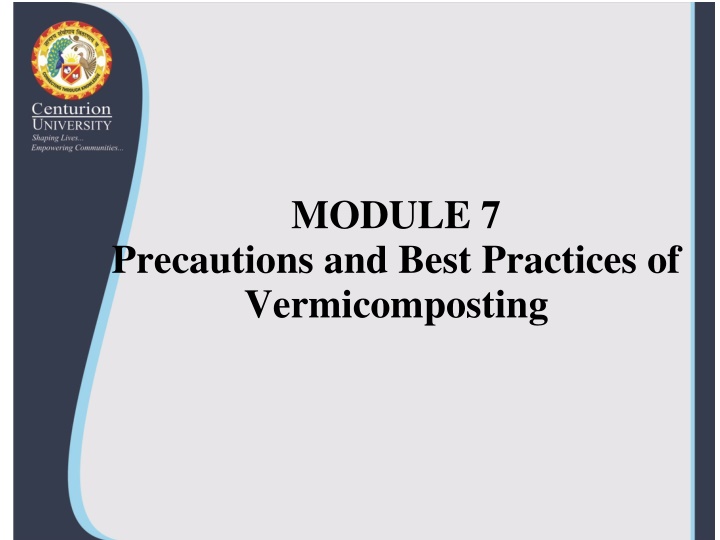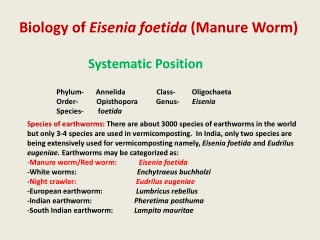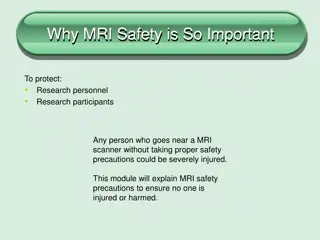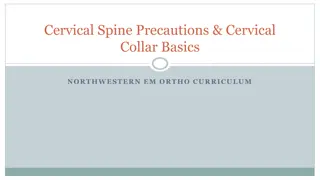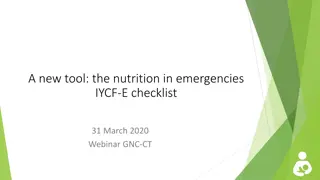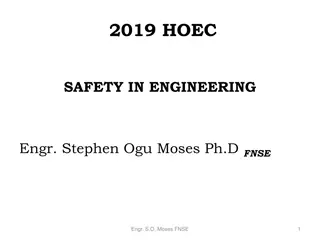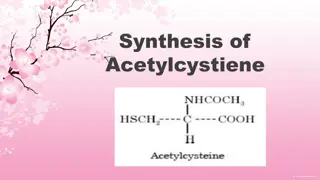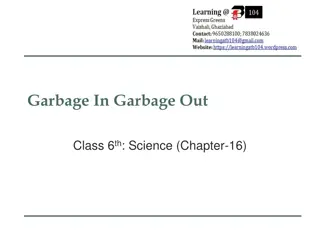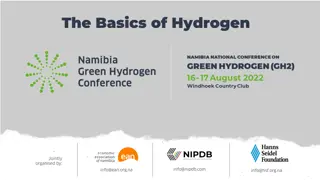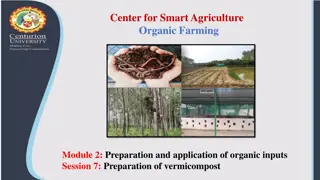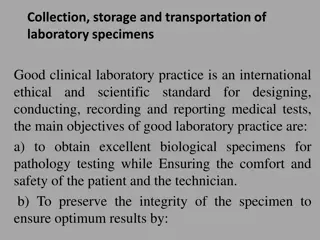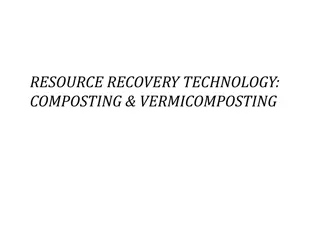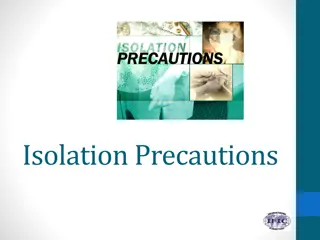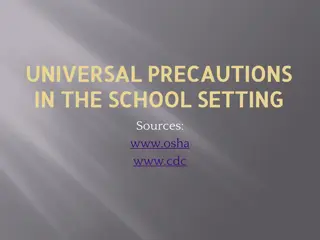Precautions and Best Practices of Vermicomposting
Learn the essential precautions and best practices for successful vermicomposting. Discover the ideal earthworm species, suitable materials, protection methods, watering tips, and post-composting care. Follow temperature, moisture, pH guidelines, avoid certain materials, and maintain proper drainage. Embrace best practices like using pre-decomposed waste and avoiding pungent items for optimal results.
Download Presentation

Please find below an Image/Link to download the presentation.
The content on the website is provided AS IS for your information and personal use only. It may not be sold, licensed, or shared on other websites without obtaining consent from the author.If you encounter any issues during the download, it is possible that the publisher has removed the file from their server.
You are allowed to download the files provided on this website for personal or commercial use, subject to the condition that they are used lawfully. All files are the property of their respective owners.
The content on the website is provided AS IS for your information and personal use only. It may not be sold, licensed, or shared on other websites without obtaining consent from the author.
E N D
Presentation Transcript
MODULE 7 Precautions and Best Practices of Vermicomposting
Precautions during the process The following precautions should be taken during vermicomposting: The African species of earthworms, Eisenia fetida and Eudrilus eugenae are ideal for the preparation of vermicompost. Most Indian species are not suitable for the purpose. Only plant-based materials such as grass, leaves or vegetable peelings should be utilized in preparing vermicompost.
Materials of animal origin such as eggshells, meat, bone, chicken droppings, etc are not suitable for preparing vermicompost. Addition of higher quantities of acid rich substances such as tomatoes and citrus wastes should be avoided. Gliricidia loppings and tobacco leaves are not suitable for rearing earthworms.
The earthworms should be protected against birds, termites, ants and rats. Watering should be done daily in summer and every third day in rainy and winter season. Either stagnant water or lack of moisture could kill the earthworms.
After completion of the process, the vermicompost should be removed from the bed at regular intervals and replaced by fresh waste materials. Do not cover vermicompost beds/heaps with plastic sheets because it may trap heat and gases. Do not overload the vermicompost heap to avoid high temperature that adversely affect their population
Make a drainage channel around the heap to avoid stagnation of water particularly in high rainfall areas in rainy season. Organic materials used for composting should be free from non-degradable materials such as stones, glass pieces, plastics, ceramic tubes/bulbs etc.
Best practices 1.Temperature : 25-30 degree Celsius. 2.Moisture : 55-60 %. 3.Optimum pH : 7.5 -8.0 4.Use of pre-decomposed cattle dung or the vegetable waste. 5.Pungency material like chilli, ginger, garlic, onion are not recommended to use in the pit because of it makes the earthworms to feel sick or die.
